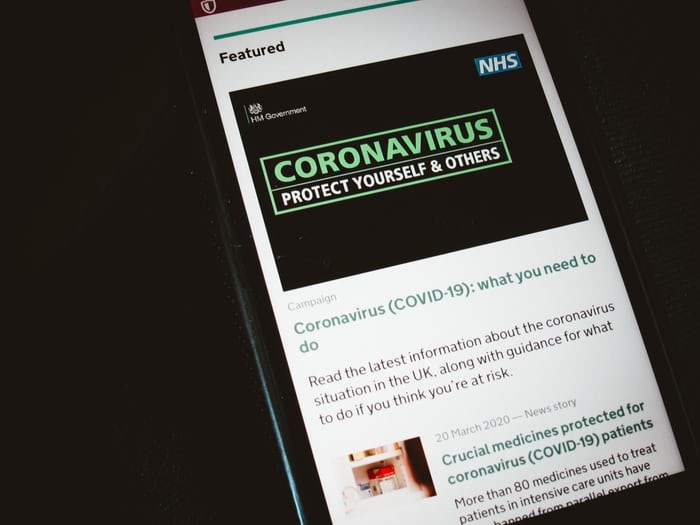Self-isolation in the era of Facebook, Twitter and WhatsApp has had its ups and downs.
Some of the memes have been hilarious. The chance to be in touch with family and friends has brought comfort to many. But there are other types of messages being shared online that have been difficult to bear.
Back in October, Research Co. found that two in five Canadian social media users were exposed to so-called “fake news” on their feeds, with the youngest residents being better equipped to distinguish reality from fiction.
But that was before COVID-19. Over the past few weeks, conspiracy theories and ill-advised recommendations have multiplied. At a time when government policies are having an irrefutable impact on our lives, it is imperative to have correct information at our disposal.
Research Co. and Glacier Media asked Canadians about their information gathering techniques for COVID-19. Across the country, more than three in five Canadians are relying on three sources: national news outlets (69%), briefings and press conferences by the prime minister (67%) and local news outlets (62%).
About three in five Canadians (59%) are paying attention to the briefings and press conferences from their premier, provincial ministers and health authorities, while fewer are visiting the Health Canada website (46%) or the web presences of provincial governments (40%).
Women are more likely to be seeking information from reputable online sources than men. While more than half of Canadian women (53%) have clicked on the Health Canada website, only 39% of men have done so. Women are also more likely to visit the websites of provincial governments (44%) than men (35%).
Canadians aged 18 to 34 are also visiting the Health Canada website (57%) more than their older counterparts (47% for those aged 35 to 54 and just 33% for those aged 55 and over). The country’s youngest adults are also less likely to be seeking information from news outlets and government briefings.
These numbers point to a public that is highly engaged in this developing story. But, as has been the case with other crises in the past, false information shared through social media can have an immediate influence on our actions and beliefs. To measure this, we tested four claims that Canadians may have received or seen on an email, text, WhatsApp message or social media post.
Across the country, 44% of Canadians were exposed to at least one of these claims. More than a quarter recalled reading two messages: “COVID-19 is an artificially created biological weapon” (27%) and “COVID-19 was created in a laboratory.” Fewer remembered two other posts: “COVID-19 originated in the United States” (14%) and “Getting more sunlight can protect against COVID-19” (10%).
On the matter of exposure, the gender gap is negligible on the two claims related to COVID-19’s supposed creation, but women were more likely to recall the “sunlight” message. The reach of these assertions is also generational, with a third of Canadians aged 18 to 34 (33%) receiving messages about COVID-19’s “laboratory origin,” compared to 28% of those aged 35 to 54 and 18% of those aged 55 and over.
Canadians who recalled each claim were then asked about its validity. More than a third of those who saw or read the messages think that COVID-19 is an artificially created biological weapon (44%), that it was created in a laboratory (43%) and that sunlight can protect against it (39%). In addition, almost three in 10 (28%) lend some credence to the purported U.S. origin of the virus.
These four assertions began to be debunked by proper journalism as early as February, but that has not deterred their distribution. Canadian women are decidedly more likely than men to know that these assertions are false. Canadians aged 55 and over – as was the case when we asked about “fake news” in October – appear to be more gullible than their younger counterparts. The message about COVID-19’s purported American origin, for instance, was credible for 37% of the country’s oldest adults who saw it, compared to 26% for those aged 35 to 54 and only 11% for those aged 18 to 34.
In a world as connected as ours, and with people glued to their phones at home, the spread of misinformation was to be expected. The survey, thankfully, outlines a Canadian public that is paying attention to the news more often and observing specific government announcements.
When this crisis ends, some Canadians will be more observant about what to buy and what to eat. We will continue to wash our hands more often. We should also reflect on this experience to cleanse ourselves from the toxicity of unsourced, unprofessional and unjustifiable junk masquerading as news.
Mario Canseco is president of Research Co.
Results are based on an online study conducted from March 30 to April 1, 2020, among 1,000 adults in Canada. The data has been statistically weighted according to Canadian census figures for age, gender and region. The margin of error, which measures sample variability, is plus or minus 3.1 percentage points, 19 times out of 20.



